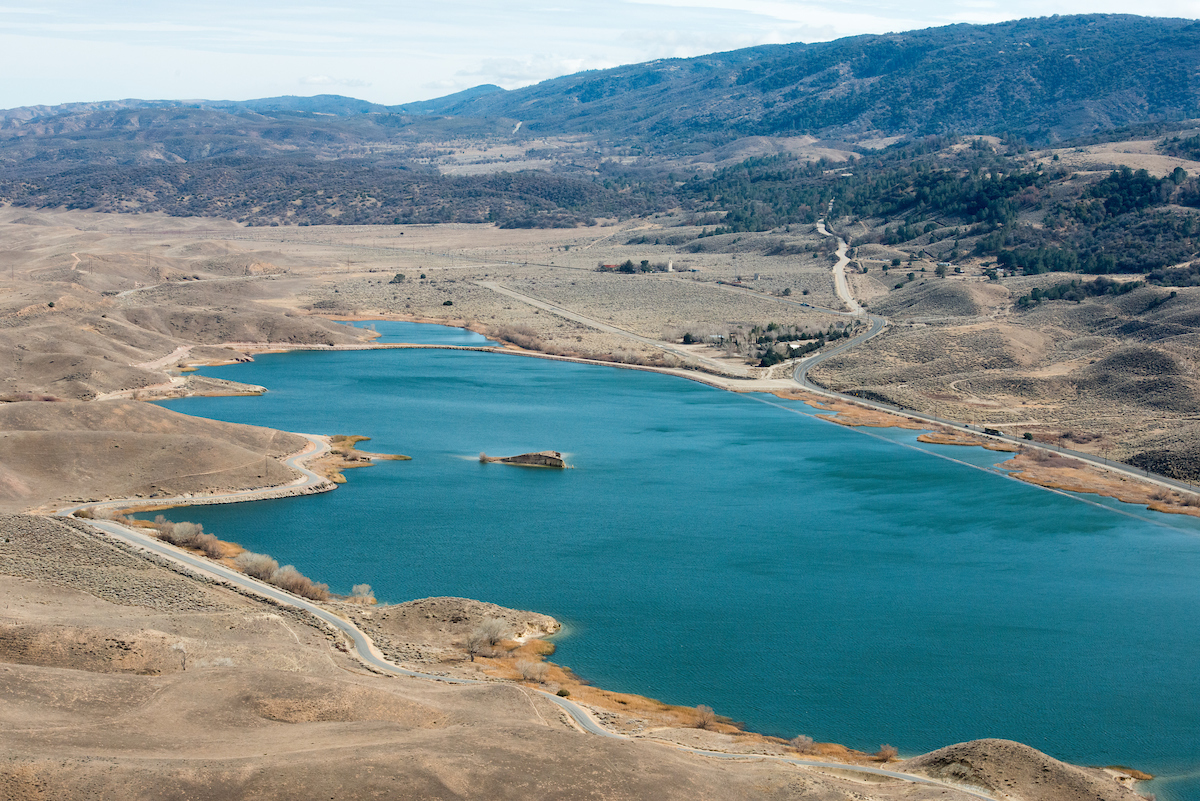This aerial view looks east toward the Quail Lake in the Tejon Ranch area of western Antelope Valley in Los Angeles County. DWR/2014
SACRAMENTO, Calif. – Today, the Department of Water Resources (DWR) urges people to avoid physical contact with water at Quail Lake in Los Angeles County until further notice due to the presence of blue-green algae. People should also avoid eating fish or shellfish from the lake.
This week’s lab results show an increase in toxin levels. A danger advisory was put in place today, and remains in effect for the entire lake until further notice. It is advised to stay out of the water and avoid contact with algal scum in the water or on shore. For more information on a danger advisory, go to the Harmful Algal Bloom webpage under Advisory Signs.
Advisories are based on the potential health risks from algae. Exposure to toxic blue-green algae, also known as cyanobacteria, can cause eye irritation, allergic skin rash, mouth ulcers, vomiting, diarrhea, and cold- and flu-like symptoms. Pets can be especially susceptible because they tend to drink while in the water and lick their fur afterwards. Keep pets away from the water.
Bloom conditions can change rapidly, and wind and waves may move or concentrate the bloom into different regions of the reservoir. The algal bloom can accumulate into mats, and scum, form foam at the surface and along the shoreline, and range in color from blue, green, white, or brown.
State guidelines on cyanobacteria and harmful algal blooms recommend the following precautions be taken in waters impacted by blue-green algae:
- Take care that pets and livestock do not drink the water, swim through algal blooms, scum, or mats, or lick their fur after going in the water. Rinse pets in clean water to remove algae from fur.
- Avoid wading, swimming, or jet or water skiing in water containing algae blooms, scum, or mats.
- Do not drink, cook, or wash dishes with untreated surface water from these areas under any circumstances. Common water purification techniques such as camping filters, tablets, and boiling do not remove toxins.
- Do not eat mussels or other bivalves collected from these areas. No fish should be consumed under a danger advisory.
- Get medical treatment immediately if you think that you, a family member, friend, pet, or livestock might have been poisoned by blue-green algae toxins. Be sure to alert medical professionals to the possible contact with blue-green algae. Also, make sure to contact the local county public health department.
For more information, visit:
- State Water Resources Control Board
- CA Office of Environmental Health Hazard Assessment
- US Environmental Protection Agency: CyanoHAB website
- Centers for Disease Control and Prevention
Contact:
Maggie Macias, Information Officer, Public Affairs, Department of Water Resources
(916) 653-8743 | maggie.macias@water.ca.gov
###
For more information, follow us on Twitter or Facebook and read our news releases and DWR updates.
